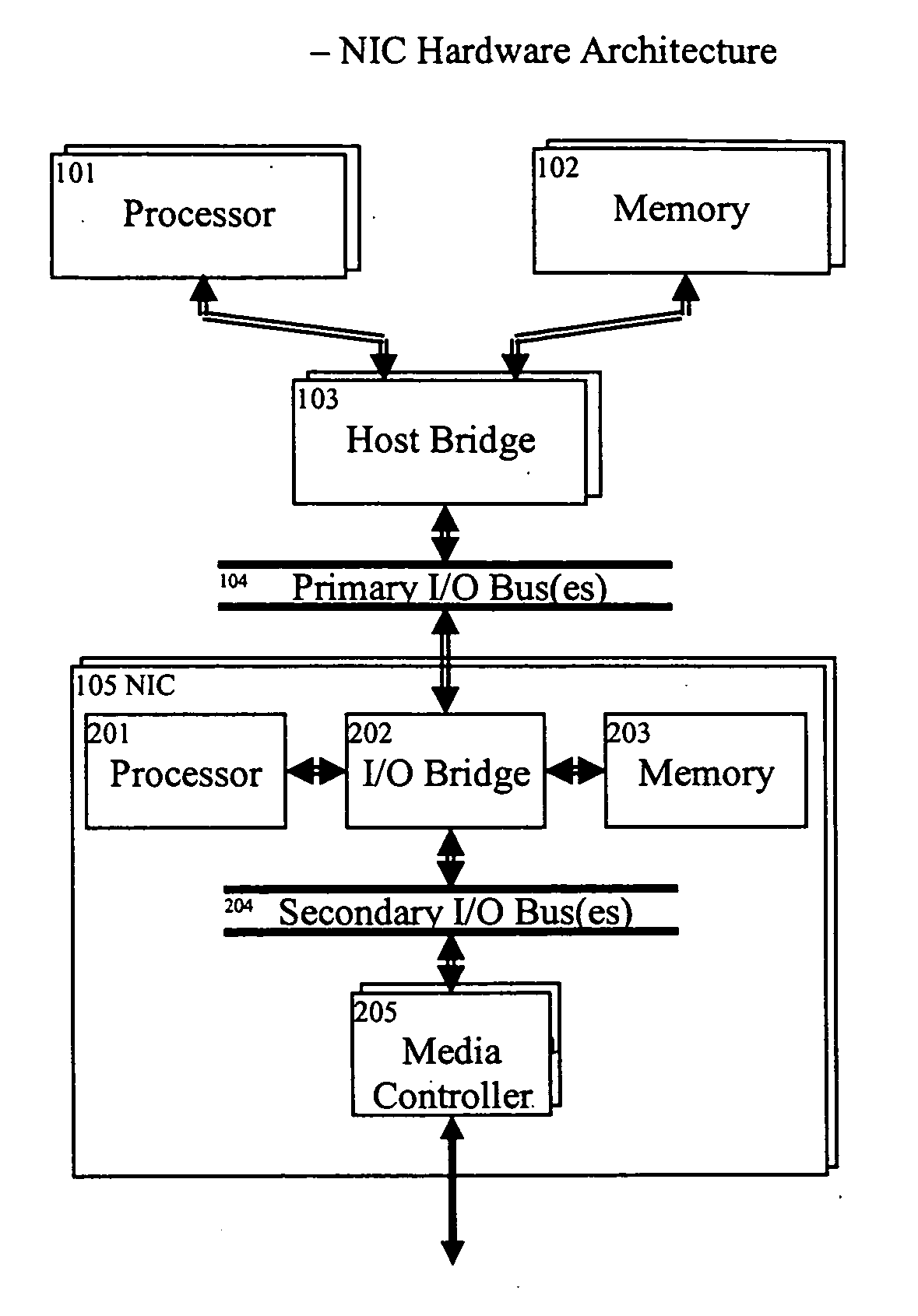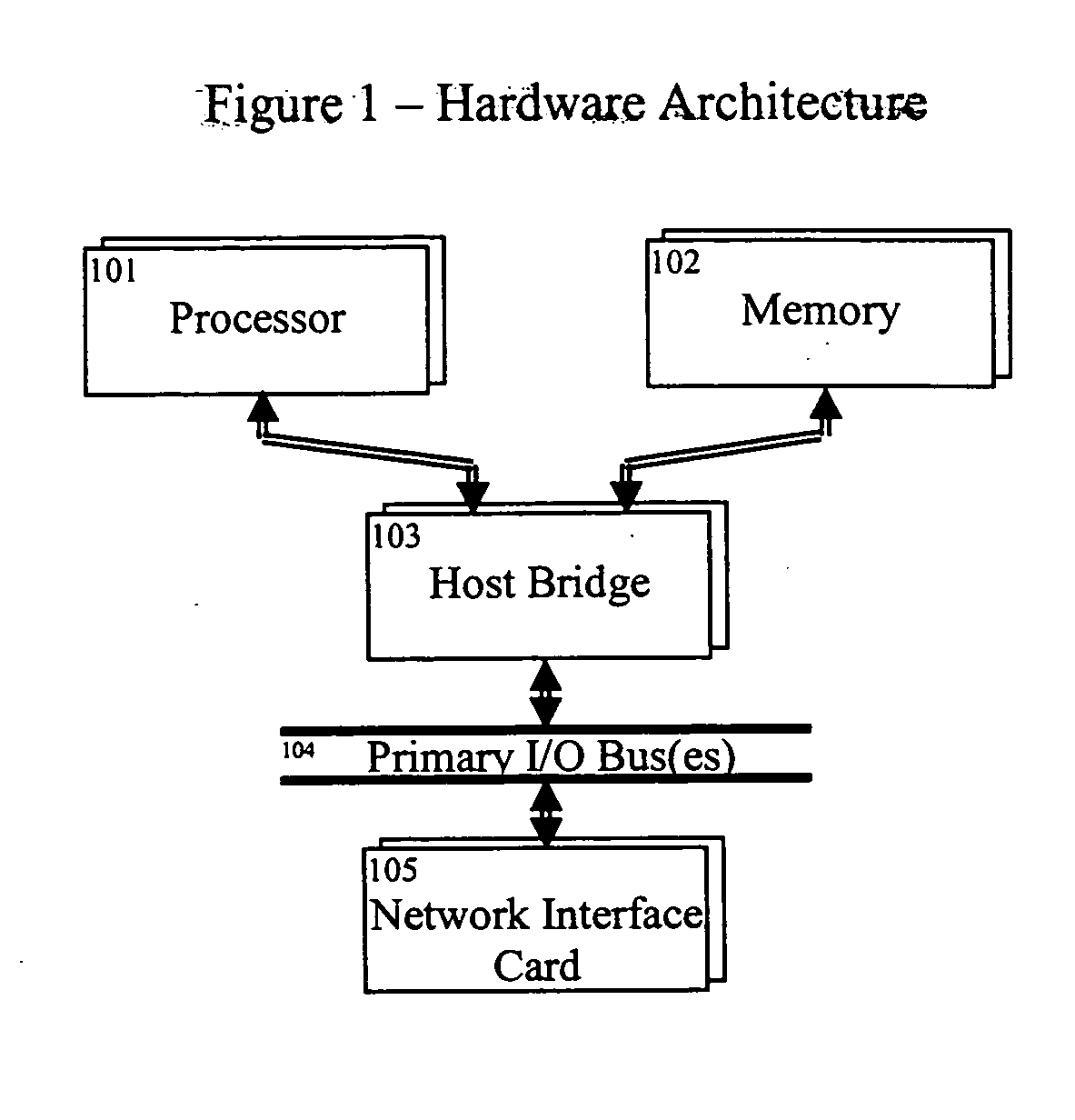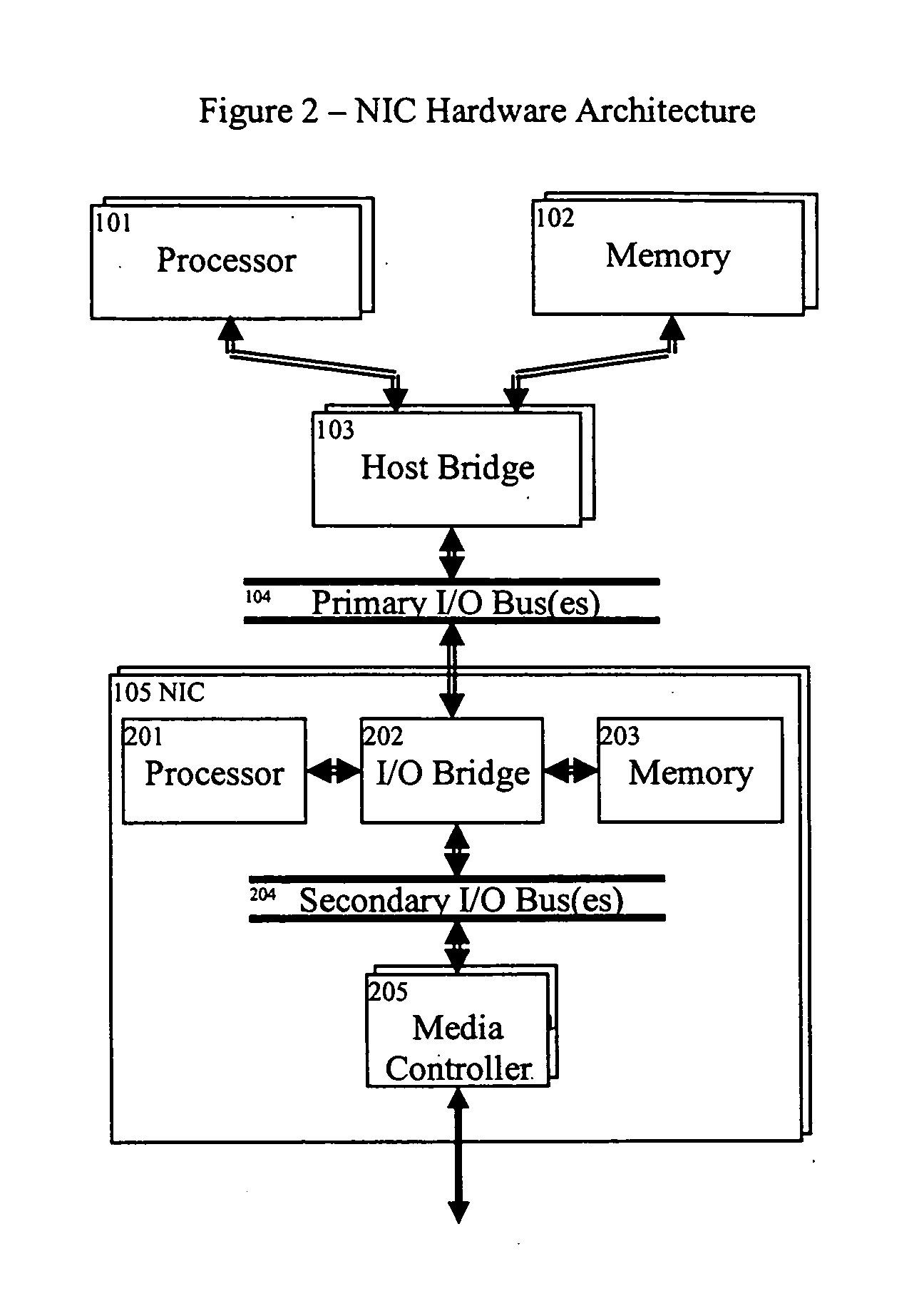Intelligent network interface card (NIC) optimizations
a network interface and intelligent technology, applied in the field of intelligent network interface card (nic) optimization, can solve the problems of ineffective implementation of off-the-shelf fibre channel controllers, tcp/ip protocol stack bottlenecks to overall system performance, and bottlenecks that become particularly apparent, so as to facilitate process aggregation of ports, enhance available throughput, and add resiliency
- Summary
- Abstract
- Description
- Claims
- Application Information
AI Technical Summary
Benefits of technology
Problems solved by technology
Method used
Image
Examples
Embodiment Construction
[0044]The hardware and software architectures to implement the preferred embodiments is first described. Generally we can look at the extant art of relevance with reference to FIGS. 1 and 2.
[0045]In FIG. 1 the typical server hardware architecture is depicted. One or more processors (101) are connected to one or more host bridges (103), which provide access to memories (102) and I / O. Connected to the primary I / O busses (104) to provide I / O to the system 99, are NICs (105), and HBAs (Host Bus Adapters) (not shown).
[0046]FIG. 2 shows the same system as FIG. 1 but here it is numbered 99a, however this Fig. also expands the features shown of NIC component of FIG. 1, showing its architecture in the portion of the block diagram that is on Network Interface Card block 105 NIC. The NIC architecture mimics that of the host in that there is a processor 201 (typically only one, although more could be supported); an I / O bridge 202, similar to the host bridge; memory 203; one or more I / O busses 2...
PUM
 Login to View More
Login to View More Abstract
Description
Claims
Application Information
 Login to View More
Login to View More - R&D
- Intellectual Property
- Life Sciences
- Materials
- Tech Scout
- Unparalleled Data Quality
- Higher Quality Content
- 60% Fewer Hallucinations
Browse by: Latest US Patents, China's latest patents, Technical Efficacy Thesaurus, Application Domain, Technology Topic, Popular Technical Reports.
© 2025 PatSnap. All rights reserved.Legal|Privacy policy|Modern Slavery Act Transparency Statement|Sitemap|About US| Contact US: help@patsnap.com



